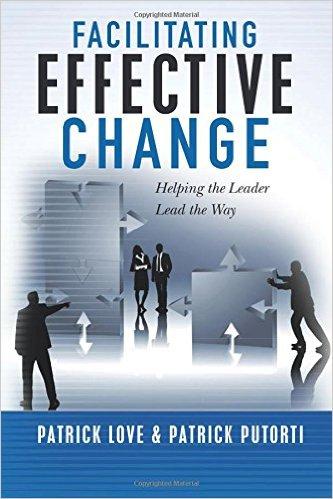- FMA
- The Fabricator
- FABTECH
- Canadian Metalworking
Leaders Must Create Effective Change
New book shows business leaders how to use facilitation to find their path to change
- By Joe Thompson
- December 14, 2015
- Article
- Management
In Facilitating Effective Change: Helping the Leader Lead the Way authors and business consultants Dr. Patrick Love and Patrick Putorti make the case that overcoming the challenges today’s business leaders face requires naming a “change facilitator” in the organizational structure.
According to Love and Putorti, a facilitator helps ensure that the path to change is clear and well-communicated to all employees. A facilitator also is uniquely positioned to reflect and observe, enabling him or her to advise business leaders on overall strategy.
Speaking from experience—both authors worked at Alcoa Operations Management Group—the authors’ main focus is on making this facilitation more effective. After discussing the power of leading through influence, they identify barriers to change, as well as the various methods facilitators and organizations can use to successfully adapt and move forward.
The idea for the book started when Putorti and Love worked together at Alcoa. Love, a PhD in astrophysics, gave his retirement lecture to the group, and this opened the door for discussion about overcoming barriers to business improvement and operational excellence. Putorti then approached Love with an idea for the book as a collaborative project.
As a senior business consultant who was instrumental in implementing the Alcoa Business System within its plants and business units, Putorti set out to combine his experience in business facilitation with Love’s knowledge of structure and business-wide change implementation to create a guide designed for the sometimes overlooked professional facilitator. Unlike other instructional business manuals, this book is written for the people responsible for leading teams and businesses to never-before-seen levels of success.
Who Are Facilitators?
In the manufacturing sector, process improvement specialists and lean manufacturing consultants are two examples of facilitators.
“In most cases, employees in these roles have experience with the process the organization wants to change, as well as the selected change method, such as lean manufacturing, strategic analysis, Six Sigma, or the Toyota Production System,” they write. “Because they typically work without direct authority, facilitators must lead by influence.”
Organizational leaders have responsibility for the enterprise’s success as well as choosing and implementing needed changes. It is unrealistic to ask those leaders to have the process knowledge, required time, or practiced skills required to navigate the complexities of the change process by themselves.
“Once a business moves from small to midsize or large, progress will begin to move backward if it has not identified a specific individual on the team dedicated to facilitate improvement,” said Putorti. “This book was written for those professionals and aims to help them better advise leaders on strategy and assist them in developing effective skills to analyze overall progress and accelerate success.”
Very few large manufacturing companies do not have these types of individuals on staff, or as third-party consultants, and there is a lot of responsibility in these roles. These individuals will never be able to influence their managers without guidance themselves, and that’s what this book tries to deliver.
The guide strikes a balance between simply giving advice to leaders and offering exercises that can be implemented when trying to make changes to a system or process.
For example, the authors describe a slightly modified version of nemawashi they use when broaching the subject of change. Nemawashi is a Japanese word for an informal process of quietly laying the foundation for an upcoming change by talking to all stakeholders and gathering feedback. It is considered an important first step in any institutional change, and it must occur before any formal steps are taken.
The authors advise writing a problem statement for each proposed change and gathering feedback from as many stakeholders as possible, including management, supervisors, and operators. These problem statements are used to open dialogue before any major change is implemented, hopefully eliminating stressors and making each team member a part of the overall change strategy.
Finally, they suggest letting all stakeholders have input on whether or not the change will be successful and what metrics will be used to judge the success or failure of the project.
Facilitating Effective Change: Helping the Leader Lead the Way is available on Amazon now.
subscribe now


Keep up to date with the latest news, events, and technology for all things metal from our pair of monthly magazines written specifically for Canadian manufacturers!
Start Your Free Subscription- Trending Articles
- Industry Events
MME Winnipeg
- April 30, 2024
- Winnipeg, ON Canada
CTMA Economic Uncertainty: Helping You Navigate Windsor Seminar
- April 30, 2024
- Windsor, ON Canada
CTMA Economic Uncertainty: Helping You Navigate Kitchener Seminar
- May 2, 2024
- Kitchener, ON Canada
Automate 2024
- May 6 - 9, 2024
- Chicago, IL
ANCA Open House
- May 7 - 8, 2024
- Wixom, MI















